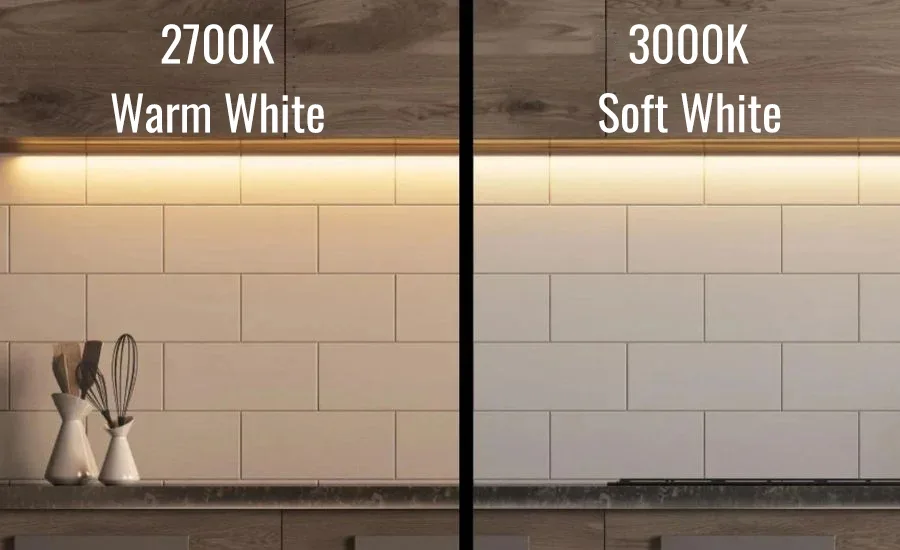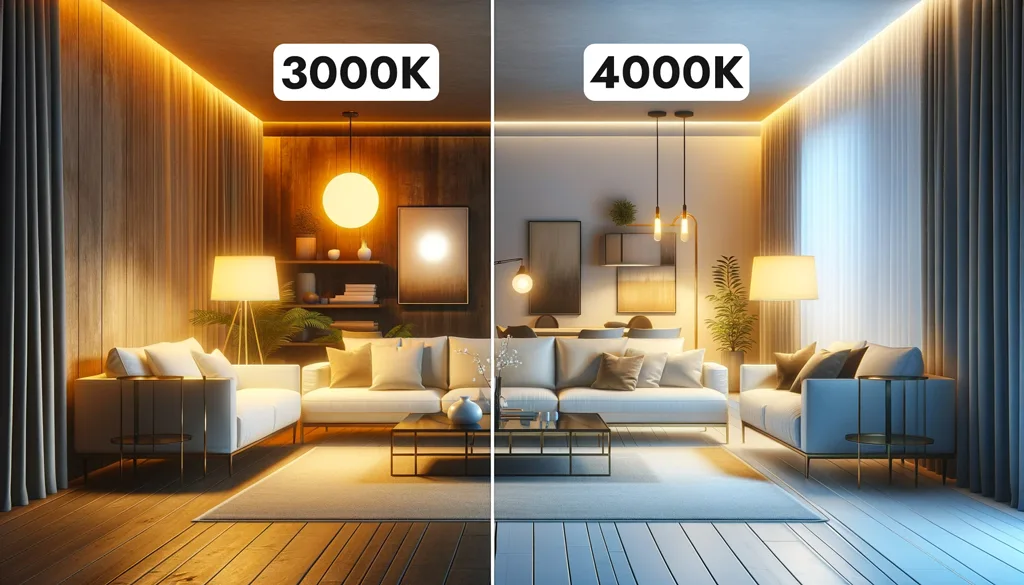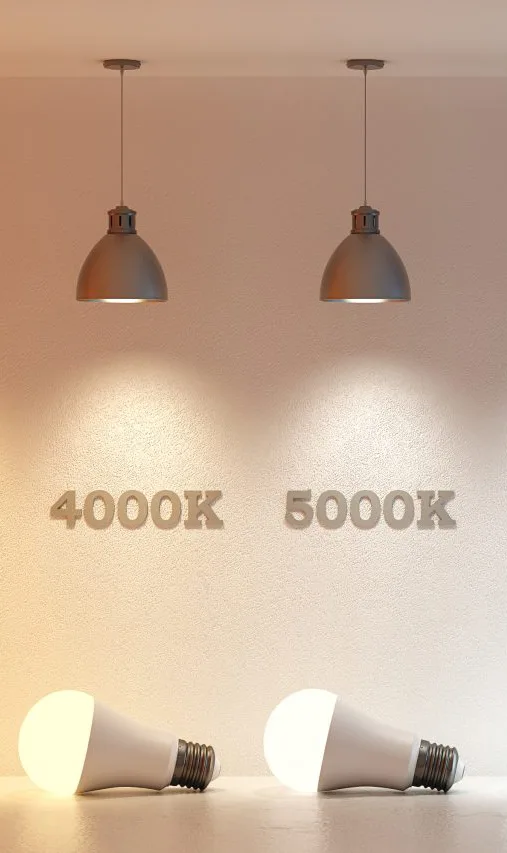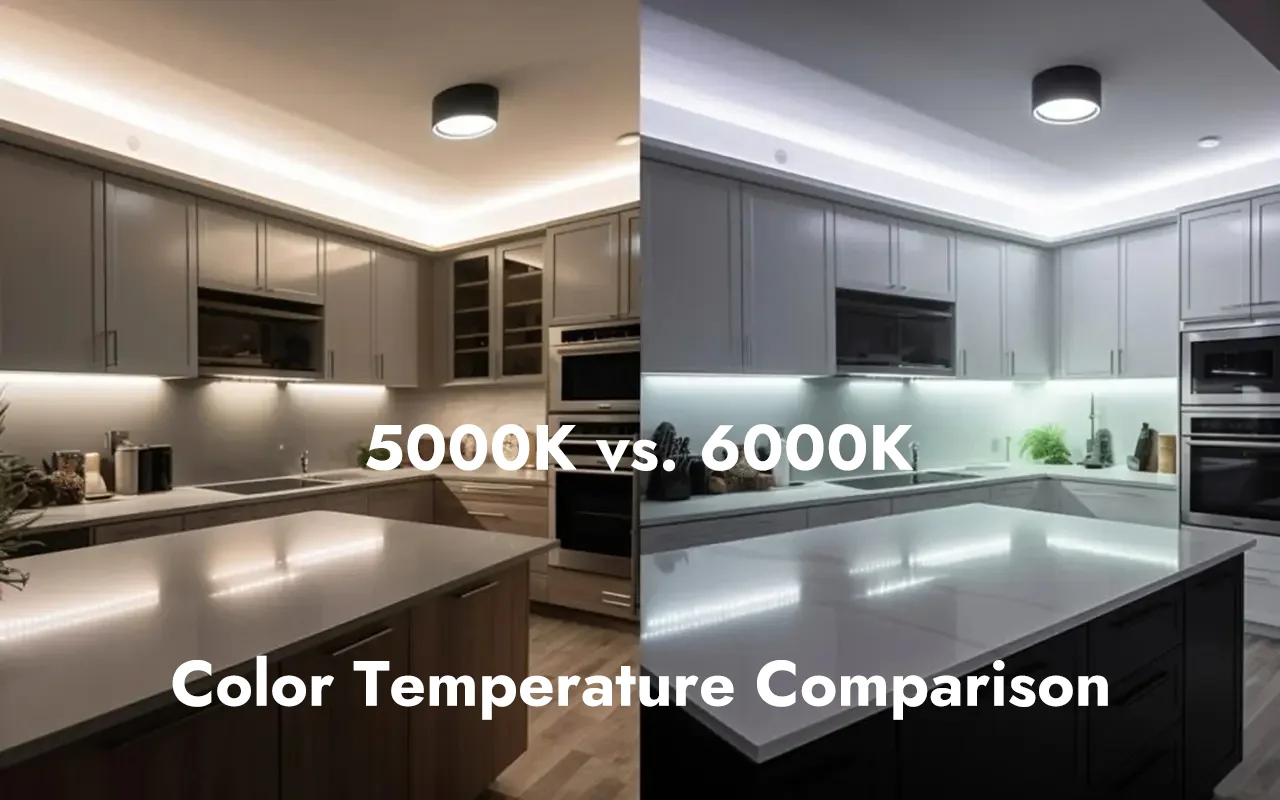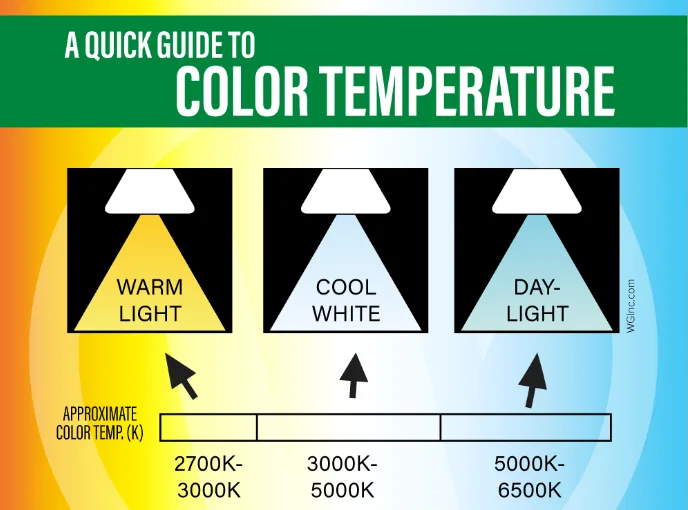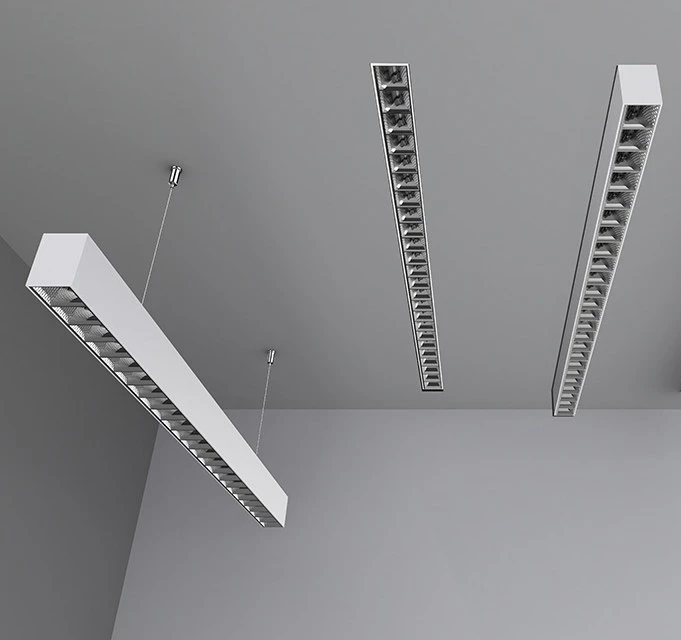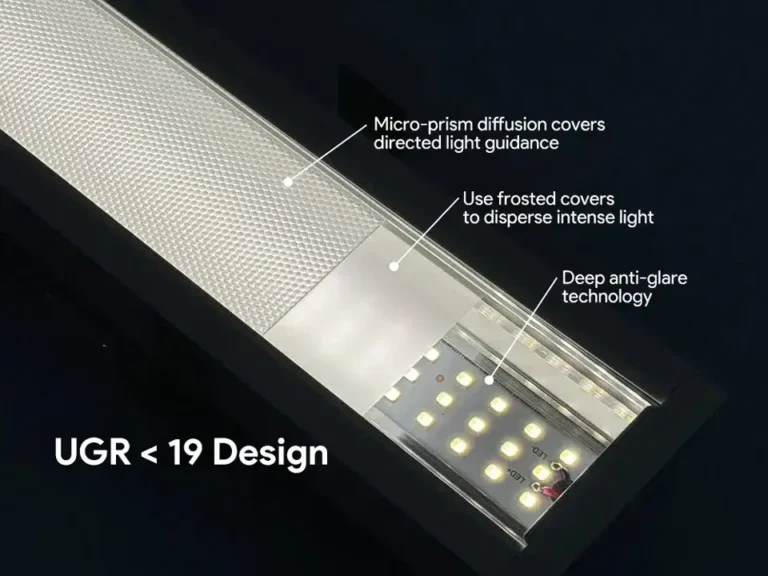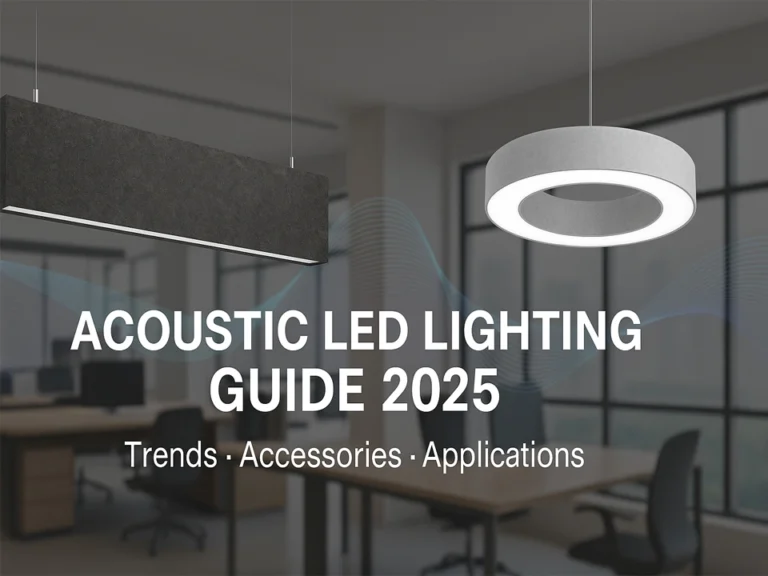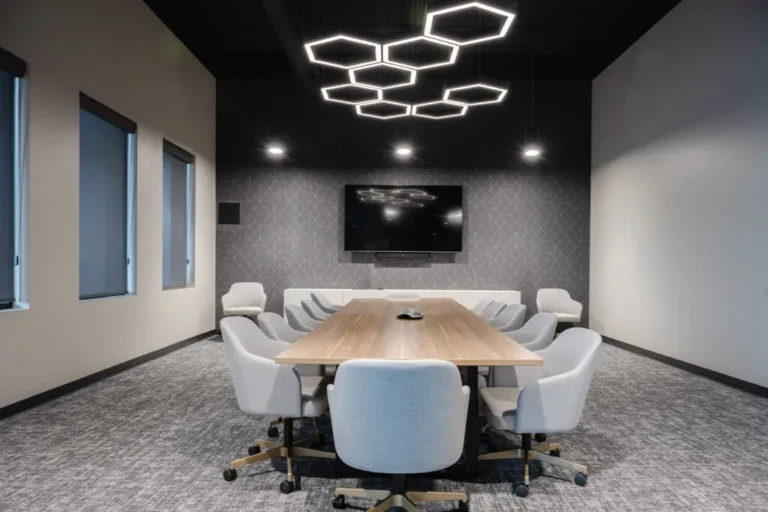In modern office space designs, LED linear lights have become the mainstream lighting solution. Not only because of their outstanding energy-saving performance and minimalist aesthetics, but also because they play an irreplaceable role in enhancing employee focus, optimizing spatial layering, and strengthening corporate image. Whether in open-plan offices, meeting rooms, reception areas, or corridors, the proper configuration of linear lighting fixtures can significantly improve work efficiency and visual experience.
Statistics show that over 70% of people spend 6–8 hours or more working in offices each day. To maintain efficiency during prolonged work hours, selecting appropriate office lighting is crucial for focusing attention and reducing stress. LED linear lights, with their high luminous efficacy, long lifespan, UGR<19 low glare design, and support for DALI or 0–10V smart dimming, are increasingly becoming the core of modern office lighting design.
This guide will focus on product types, installation methods, technical parameters, and selection recommendations to help you systematically understand and select LED linear lighting solutions suitable for modern office environments.
What is LED linear lighting?
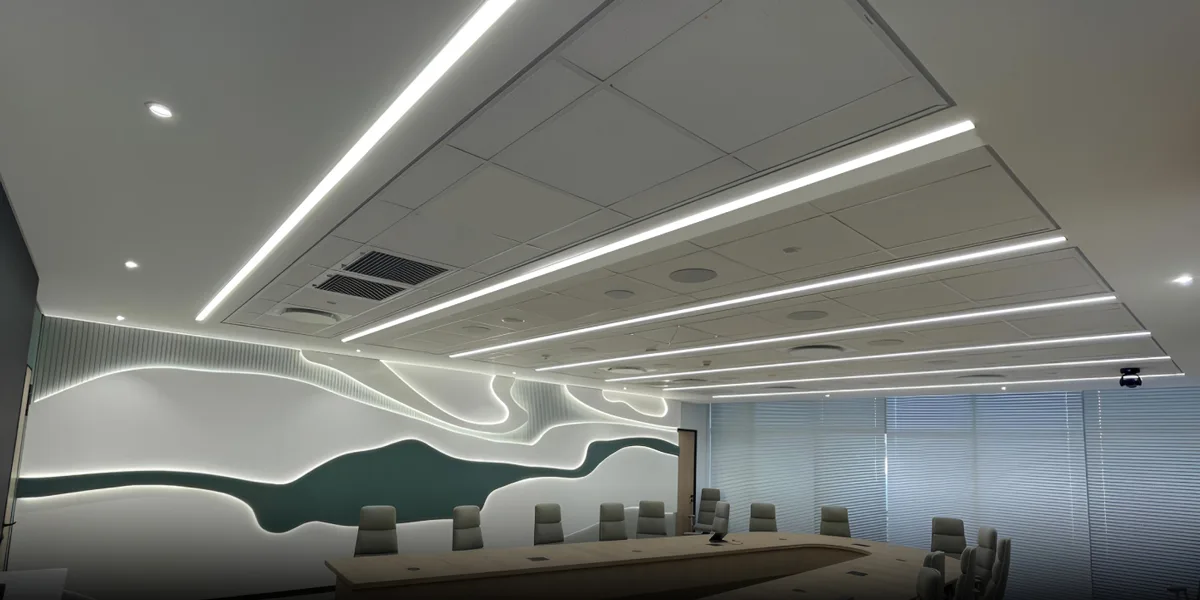
LED linear lighting is a cutting-edge solution designed to provide uniform lighting in a straight line, making it an ideal choice for modern and contemporary spaces. Whether you’re looking to decorate a stylish office, a chic living room, or a vibrant commercial environment, LED linear lighting seamlessly blends functionality with style. LED linear lighting fixtures come in a variety of styles, including LED pendant lights, recessed LED linear lights, and strip linear lights, all of which can be customized to suit any decorative style or performance requirement.
One of the key highlights of LED linear lighting is its ability to create a clean, sleek appearance, enhancing the elegance and sophistication of any room. By providing consistent, glare-free light, linear lighting improves visibility, reduces eye strain, and enhances safety in work areas and living spaces. These fixtures are highly versatile, capable of being installed on ceilings, walls, or even floors, allowing you to highlight architectural features or create the desired ambiance throughout the space.
LED linear lighting offers a variety of color temperature options, allowing you to easily adjust the lighting to create the desired ambiance, whether you prefer warm, inviting light or cool, vibrant illumination. The latest LED linear technology is not only energy-efficient and durable but also provides reliable performance for years to come. Its directional or adjustable characteristics make it particularly suitable for tasks requiring focused lighting, such as office work, reading, or precision tasks.
From enhancing overall decor to providing practical, task-oriented lighting, LED linear lighting is a versatile and efficient choice for anyone looking to transform their space with modern aesthetics and reliable performance.
Why choose LED linear lights for modern office lighting?
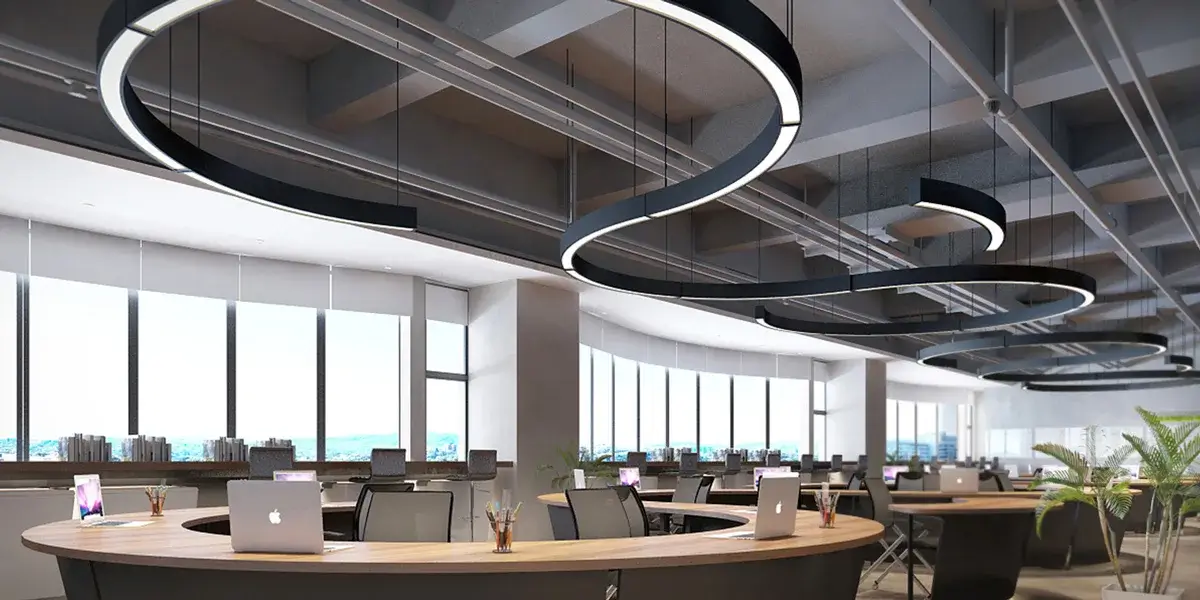
In the past, office lighting focused more on functionality—it only needed to meet illuminance requirements. However, with the rise of diversified office models (remote + on-site), increased spatial flexibility, and a greater emphasis on employee health and well-being, lighting systems are undergoing a transformation from “infrastructure” to “value-creating tools.”
The core requirements for lighting in modern offices include:
- Visual comfort: Reducing glare and flicker to protect employee vision
- Spatial coherence: Enhancing spatial structure and functional zoning through lighting
- Energy efficiency and intelligence: Reducing energy consumption and supporting smart dimming/motion-sensing control
- Design consistency: Lighting style must align with overall interior design.
- Maintenance convenience: Reduce maintenance frequency and labor costs.
In this context, LED linear lights, with their high flexibility, stability, and aesthetic adaptability, are increasingly becoming one of the most promising lighting products in office lighting systems.
Compared to traditional grid lights or fluorescent tubes, LED linear lights offer greater system flexibility. They support multiple installation methods (suspended, recessed, and surface-mounted) and can be customized to suit the functional attributes of different office areas. Whether it’s high-efficiency open-plan workstations, quiet and serene meeting spaces, or aesthetically focused reception areas, LED linear lights provide a highly consistent, uniform, and comfortable lighting environment.
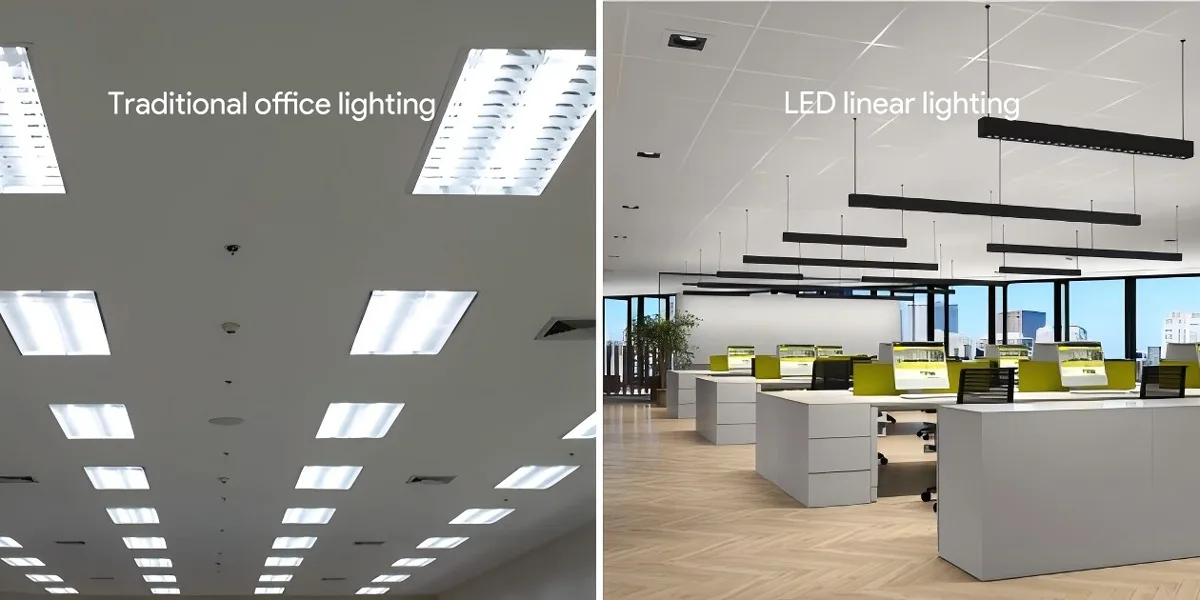
Comparison Between LED Linear Lights and Traditional Office Lighting Solutions
| Dimensionality | Traditional Grid Light / Downlight | LED Linear Light |
| Luminous Efficacy | 60–80 lm/W | 100–130 lm/W or higher |
| Light Distribution | Point source, prone to shadows | Uniform linear emission, comfortable and natural |
| Aesthetic Appearance | Exposed fixtures with fixed form | Sleek appearance, supports custom designs |
| Installation Flexibility | Limited installation options | Supports suspended, recessed, or surface mounting |
| Control Capabilities | Basic on/off control | Supports dimming, color tuning, and smart system integration |
| Energy Efficiency | High energy consumption, short lifespan | Over 60% energy savings, lifespan over 50,000 hours |
| Suitability for Modern Offices | Poor adaptability | Highly adaptable |
The specific advantages of LED linear lights can be summarized as follows:
1. Uniform light distribution reduces eye strain
LED linear lights typically feature a large light-emitting surface and a diffusive light diffuser, effectively eliminating local shadows and bright spots to create a soft, flicker-free lighting environment. In particular, the low-glare design with UGR < 19 is especially important in prolonged computer-based office settings.
2. High energy efficiency and low operational costs
Mainstream LED linear lights for office use typically achieve luminous efficacy of 100–130 lm/W, far exceeding traditional fluorescent lamps (approximately 60–70 lm/W). In today’s increasingly stringent energy-saving and environmentally friendly building standards (such as LEED and WELL certifications), such high-efficiency products are particularly favored.
3. Multiple color temperatures/color rendering options to suit different spatial atmospheres
Neutral white light at 4000K is recommended for office areas to maintain focus, while warm white light at 3000K can be used in meeting rooms to create a relaxed atmosphere. Products with CRI > 90 can also be selected to ensure accurate color reproduction of documents and drawings.
4. Flexible installation options with customization capabilities
The lights can be suspended, recessed, surface-mounted, or even connected in a continuous S-shaped wave pattern, allowing designers to create innovative layouts based on different spatial structures. The housing color, length dimensions, and control methods can also be customized for specific projects.
5. Supports smart control systems
Linear lights can easily integrate with control protocols such as DALI, 0-10V, KNX, Bluetooth Mesh, and wireless systems. When combined with sensors, they can achieve “lights on when people arrive, lights off when people leave,” which is both energy-efficient and enhances the intelligence of the space.
In summary, LED linear lights for offices are not only lighting tools but also integral components of space design, part of energy management, and vehicles for shaping corporate image. In today’s trend toward human-centric and intelligent office lighting, choosing LED linear lights is both a forward-thinking decision and the first step toward creating a competitive edge.
Four Popular Types of LED Linear Lights for Office Use
In office lighting projects, LED linear lights are widely used in various spatial structures due to their modular design and structural compatibility. Depending on installation methods and intended use, linear lights are primarily categorized into four main types: suspended, recessed, surface-mounted, and wall-mounted, each with distinct features and suitable applications.
1. Suspended LED Linear Lights
Suspended LED linear lights are an excellent choice for illuminating desks, workstations, and workspaces, making them one of the most popular and striking lighting trends today. Not only can you create an aesthetically pleasing lighting system, but you can also completely redefine the appearance of a space. Through eye-catching designs and suspended layers, they create unexpected effects and impart a sense of elegance and dynamism.
Suspended LED linear lights are suitable for open-plan offices, meeting rooms, high-rise office areas, and creative spaces. They are suspended from the ceiling using adjustable cables, allowing you to adjust the installation height according to your needs to control light intensity and illumination range. They are also the best lighting solution for offices with high ceilings.
Installation features:
- Fixed to the ceiling with adjustable suspension ropes, suitable for spaces with high ceilings or exposed roof designs.
- Can be installed individually, in continuous rows, or customized into irregular shapes (L-shaped, Z-shaped, ring-shaped, etc.).
- The height of the lamp body above the ground is adjustable, supporting a uniform light strip visual effect.
Key product features:
- Built-in constant current drive power supply (some are pluggable for easy maintenance)
- Supports direct connection to AC 110V/220V or low-voltage DC systems (such as 24V/48V)
- Suspension ropes/mounting parts must be equipped with anti-disengagement devices and adjustment locks
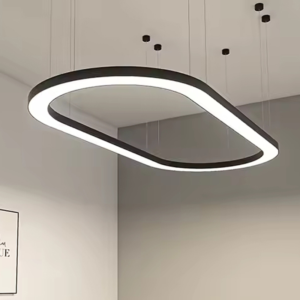
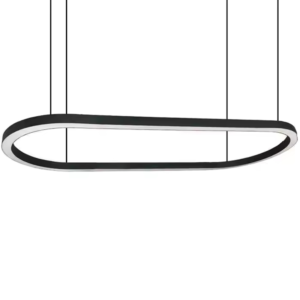
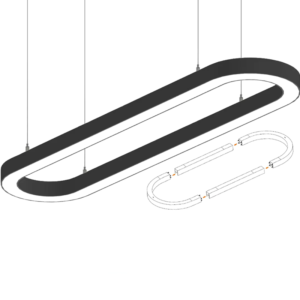
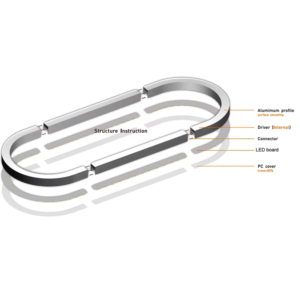
Profile Oval LED Pendant Linear Light for Modern Offices
Input Voltage: AC100-277V/AC220-240V
Power: 25W/40W/50W/60W/70W/80W/Customized Available
Luminous Flux: 100-110Lm/W
CCT: 3000K/4000K/6000K/3000-6000K Tunable
CRI: >80
UGR: <19
Fllicker Free: Yes
Beam Angle: 120°
Function Option: ON&OFF/0-10V/DALI/DALI Push/DALI DT8/Triac/Remote Control RGBW
Finish Color: Black/White/Sliver/Gold
Material: 6063 Aluminium Profile + Opal Diffuser
Profile Size Option: W40*H60mm, W40xH80mm, W60xH60mm, W60xH80mm, W80xH80mm, W100xH80mm, W120xH80mm
Product Size: L1300xW450xH60mm, L1800xW600xH60mm, L2200xW740xH60mm, L2700xW900xH60mm, L3000xW1000xH60mm, Customized Available
2. Recessed LED Linear Lights
Recessed LED linear lights are commonly found in offices and other commercial building areas, designed to create more space within a room. This type of architectural lighting is embedded into ceilings, walls, or floors, and because it occupies minimal visual space, it can make a room appear larger. The goal of recessed LED linear lighting is not only to enhance visibility but also to create an engaging and atmospheric environment.
Recessed LED linear lights are suitable for suspended ceiling offices, meeting rooms, reception areas, administrative offices, and more. They can be installed individually or in continuous rows to direct light to the desired location. Recessed linear lighting is not just about saving space. When designed properly, it can add a unique style and sophistication to a room.
Installation features:
- The lamp body is embedded in the ceiling (gypsum board, aluminum ceiling tiles, or other integrated ceilings).
- Visually simple and unobtrusive, suitable for minimalist design styles.
- Generally requires pre-cutting holes or installing slots in the ceiling structure in advance.
Key product features:
- Quick installation with snap-on/spring mechanism or mounting bracket
- Some models feature framed/frameless designs to suit different ceiling types
- Heat dissipation structure must take into account heat accumulation inside the ceiling
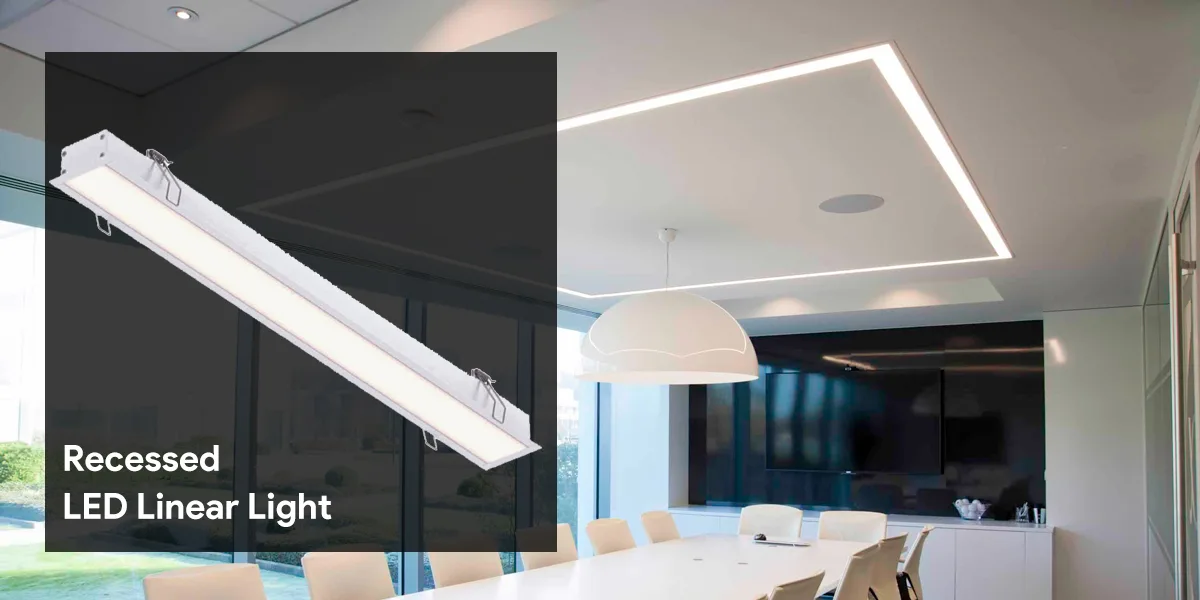
3. Surface-Mounted LED Linear Lights
Surface-mounted LED linear lights are an ideal alternative to recessed linear office lighting, offering one of the most practical and seamless LED lighting solutions available. They provide the same lighting effects as recessed lighting while maintaining an aesthetically pleasing appearance. Additionally, surface mounting is the simplest and most cost-effective method for installing lighting fixtures, as it does not require any openings. The fixtures are directly exposed in the space, making them ideal for installation in small spaces.
Surface-mounted linear LED lights are suitable for corridors, break rooms, older office buildings, and spaces without ceilings. They not only add vitality to the space but also create a comfortable and safe environment. Surface-mounted linear LED lights feature a uniform lighting design, making them an ideal choice for easy installation and maintenance.
Installation features:
- The lamp body is directly fixed to the concrete or plasterboard ceiling surface.
- Suitable for environments with low ceilings or where suspended ceilings are not possible.
- Simple installation and convenient maintenance.
Key product features:
- The lamp body is equipped with a surface mounting bracket or magnetic mounting device.
- Most lamps use an integrated aluminum lamp shell, which improves heat dissipation and appearance consistency.
- The lampshade is commonly made of PC frosted material, which has good dustproof and anti-glare properties.
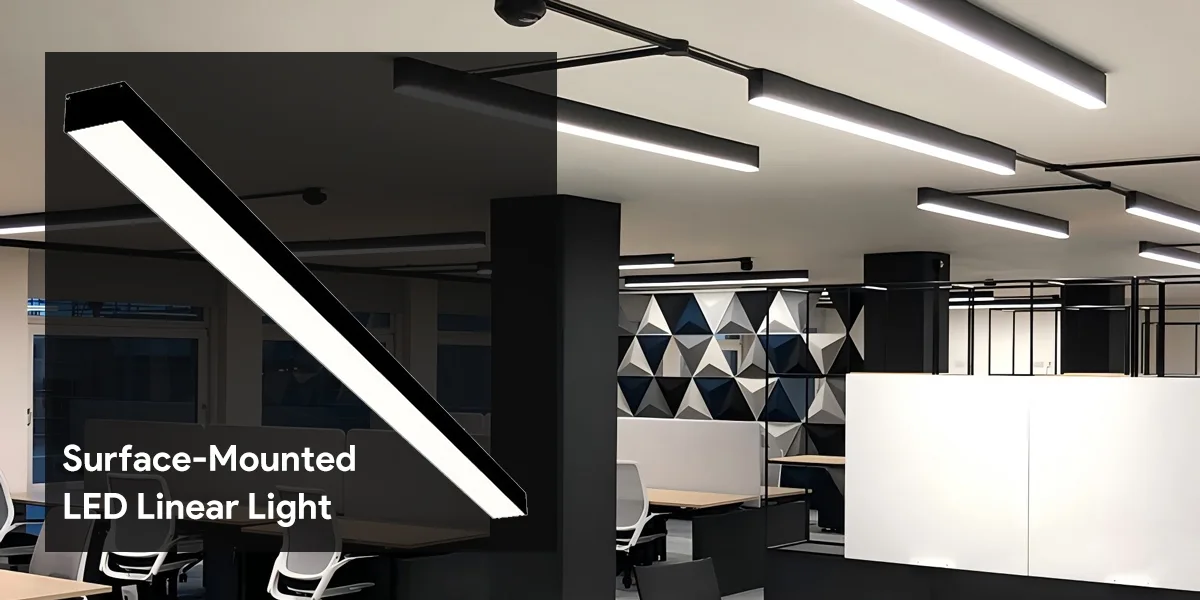
4. Wall-Mounted LED Linear Lights
Wall-mounted LED linear lights provide diffuse, uniform lighting and can be selected for direct or indirect lighting depending on the product chosen. They are suitable for general lighting in large spaces or for lighting peripheral and transitional areas. Wall-mounted LED linear lights feature a smooth extruded aluminum housing, with symmetrical light distribution evenly illuminating surfaces through diffusing lenses or diffusers.
Wall-mounted LED linear lights create a pleasant and warm atmosphere, making them ideal for corporate reception walls, stairwell walls, display walls, and creative office environments. We offer a wide range of modern wall-mounted LED lighting fixtures to meet all the needs and styles of contemporary corporate offices and residential spaces, allowing you to achieve general lighting while maintaining the sophistication required to enhance the quality of office, residential, and hotel environments.
Installation features:
- The luminaire is installed on the facade wall, enabling upward and downward lighting, wall washing effects, or indirect lighting.
- It helps to create spatial layers and atmospheric lighting effects.
- It can be combined with decorative panels or logo designs for a coordinated presentation.
Key product features:
- Usually equipped with bidirectional light-emitting modules or wall-washing light distribution structures.
- The thickness of the lamp body must be suitable for the wall structure and wiring conditions.
- Some models support flush mounting/surface mounting with a frame.
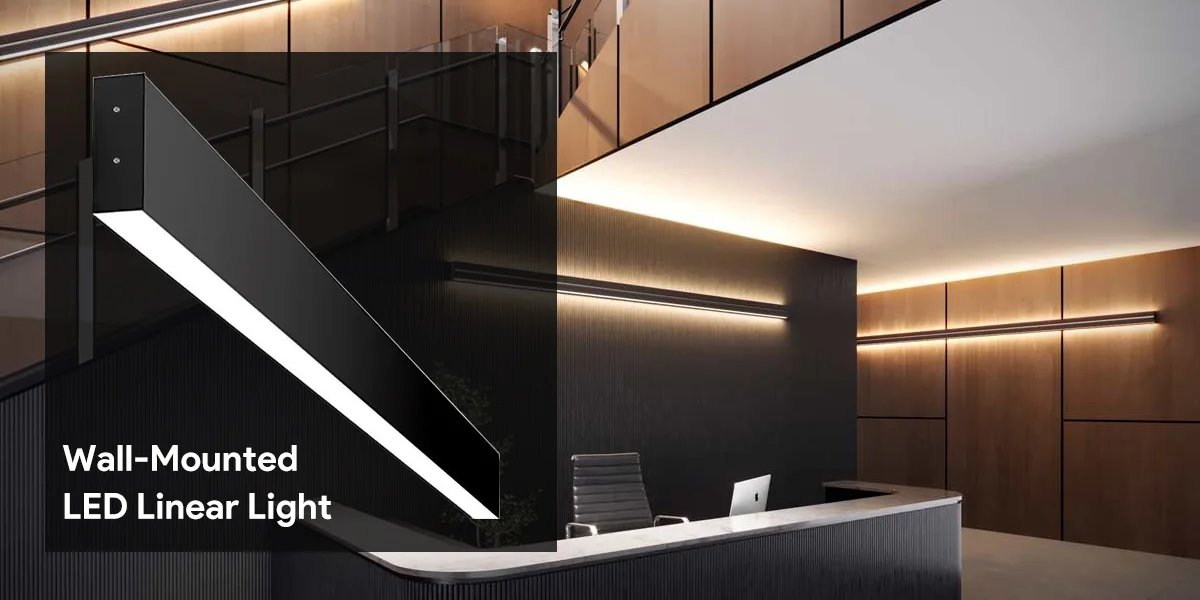
The appropriate selection of LED linear lights not only affects the quality of the lighting environment but also directly impacts construction efficiency, maintenance costs, and the overall aesthetic appeal of the space. It is recommended to clearly define the type of LED linear lights to be used during the initial design phase to ensure compatibility between the lighting fixtures, power supply, wiring, and ceiling structure, thereby avoiding rework and functional conflicts.
Watch the video to learn more about office lighting.






What should you consider when selecting office linear lights?
In modern commercial space lighting and office lighting, linear lights not only serve an illuminating function but also directly impact visual comfort and energy efficiency. Below are several key parameters you must consider when selecting commercial LED linear lights:
1. Color Temperature (CCT)
Color temperature determines the “warmth” or “coolness” of light, and different color temperatures directly influence the ambiance of a space:
- 3000K Warm White Light: Creates a warm and soft atmosphere, suitable for rest areas, meeting rooms, etc.
- 4000K Neutral White Light: Provides natural and true light, commonly used in office buildings, supermarkets, schools, and other office or public areas.
- 6000K Cool White Light: Offers stronger visual clarity, often used in industrial factories, exhibition halls, and other high-brightness environments.
- Tunable White: Supports adjustment within the 2700K to 6500K range, suitable for smart spaces requiring flexible lighting environments.
For most office linear lighting projects, it is recommended to choose the 4000K or Tunable White solution to accommodate different scene requirements. For more information on color temperature functions and comparisons, please refer to the following blog.
LED Lighting Color Temperature Comparison: 2700K vs. 3000K
LED Lighting Color Temperature Comparison: 3000K vs. 4000K
LED Lighting Color Temperature Comparison: 4000K vs. 5000K
LED Lighting Color Temperature Comparison: 5000K vs. 6000K
3000K vs 4000K vs 5000K vs 6000K: What’s The Difference?
2. Color Rendering Index (CRI)
The Color Rendering Index (CRI) reflects a light source’s ability to reproduce the true colors of objects. The higher the CRI, the more accurate the colors appear. Recommendations:
- Commercial spaces and office lighting should use CRI ≥ 80;
- For applications with high color recognition requirements (e.g., design firms, clothing retail, hospitals), high CRI fixtures with CRI ≥ 90 can be selected.
High CRI not only enhances visual experience but also helps improve product appeal and employee productivity. For more information on CRI, please read the blog “How Important is the Color Rendering Index of LED Strip Lights?”
3. Glare Rating (UGR)
Glare is the most common lighting issue in offices, often leading to eye strain and reduced concentration. UGR (Unified Glare Rating) is an internationally recognized glare evaluation metric.
- UGR < 19: Suitable for most office lighting scenarios;
- UGR < 16: Suitable for precision work areas or high-end conference rooms.
What is UGR?
UGR stands for Unified Glare Rating. It is used to measure glare levels, calculated by dividing the glare from all visible light fixtures by the room’s background layer. UGR is only applicable to indoor lighting fixtures. It cannot be used for outdoor lighting fixtures (e.g., street lighting) and cannot be calculated independently for individual light fixtures.
UGR is an important factor in assessing whether office lighting or work lighting is acceptable. According to the IES EN12464-1 standard, for office environments, a UGR value below 19 is considered acceptable, and below 16 is considered good. If an environment’s UGR can be controlled below 10, it can generally be considered glare-free.
If you are interested in glare-free linear lighting solutions, choose fixtures equipped with micro-prism diffusers or deep anti-glare structural designs.
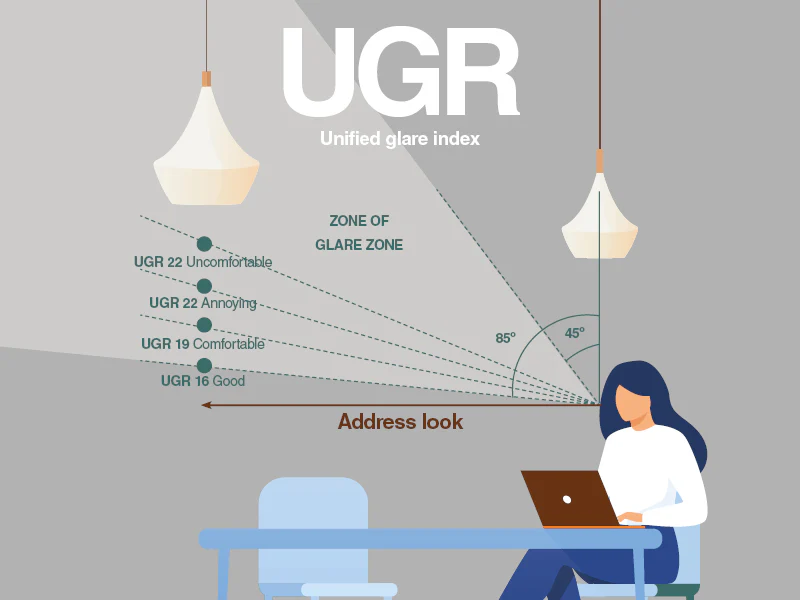
4. Luminous efficacy (lm/W)
Luminous efficacy represents the amount of light output (measured in lumens) produced by a luminaire for every 1 W of electrical energy consumed. This is a core indicator for evaluating energy efficiency. LED linear lighting requires higher luminous flux to provide sufficient brightness. However, if the size is too small, it can lead to excessive surface brightness, potentially causing severe glare. Therefore, when selecting linear lights for general lighting, choose larger-sized fixtures, especially those with a larger light-emitting area.
- General commercial linear lighting has a luminous efficacy of 90–110 lm/W;
- High-efficiency linear lighting can achieve over 120 lm/W, significantly reducing energy consumption and operational costs.
For projects requiring long-term operation or covering large areas, it is recommended to prioritize high-efficiency products to optimize overall energy consumption budgets.
5. Control System Compatibility
With the widespread adoption of smart lighting systems, selecting linear lighting fixtures that support dimming and centralized control has become a trend. Mainstream control methods include:
- 0–10V or DALI dimming: Commonly used in office buildings and commercial projects;
- PIR sensing: Used in corridors, restrooms, and other “people-activated lighting” scenarios;
- Wireless control (e.g., Zigbee, Bluetooth): Suitable for flexible control and future expansion needs.
A high-quality commercial linear lighting system should have excellent control compatibility and scalability to facilitate system integration and future maintenance.
6. Aesthetics
One of the primary reasons for choosing linear lighting in offices is aesthetics. In recent years, LED linear lighting has gained rapid popularity, and the reason is clear: everyone has grown tired of traditional CAT 2 fixtures. Here are the aesthetic options available for customizing linear lighting in your project:
- Surface treatment: anodized, sandblasted, painted, natural color, sound-absorbing foam, etc.;
- Surface color: white, black, silver, gold, green, blue, and customizable options;
- Materials: primarily anodized aluminum and PC diffusers;
- Shape: straight, square, round, oval, S-shaped, L-shaped, U-shaped, etc.
LED linear lighting strips are typically made of anodized aluminum and feature powder coating in various colors. In addition to powder coating, other surface treatments should be considered to make your LED linear lighting stand out. Wood, industrial metals, and other natural materials are essential components in LED linear lighting.
Which type of linear lighting should I choose for my office?
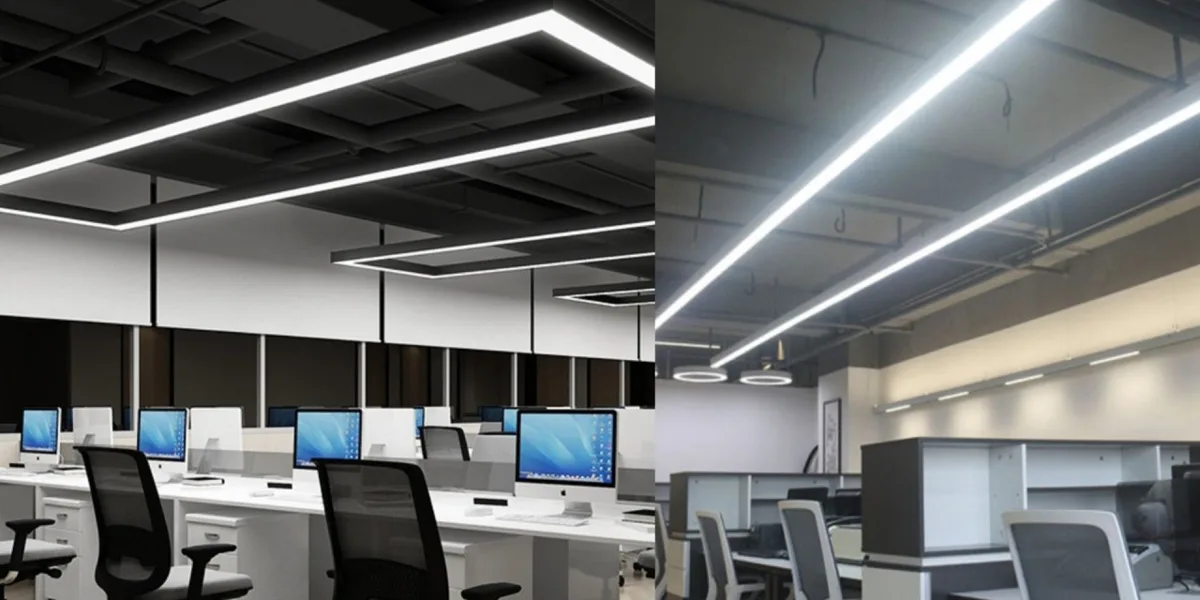
There are many types of linear lighting for offices, ranging from recessed to surface-mounted to suspended. Not only do they vary in appearance, but they also differ significantly in terms of installation methods, wiring conditions, maintenance requirements, and aesthetic styles. So, faced with such a wide range of options, which linear lighting should you choose for your project?
We recommend considering the following three key factors to select a practical and harmonious lighting style.
1. Budget
In actual lighting projects, budget is always the primary factor that cannot be ignored. This is because lighting costs not only include the price of the fixtures themselves but also the auxiliary materials, wiring, installation difficulty, and labor costs required for construction.
- Recessed linear lights: While the fixtures themselves have moderate costs, their installation requires precise lighting slots or openings to be pre-cut in the ceiling, often involving customized ceiling structures, hole cutting, electrical wiring, and aesthetic repairs. Therefore, their overall installation costs are the highest, especially in larger-scale projects.
- Ceiling-mounted linear lights: Installation is relatively simple, as they are directly fixed to the ceiling surface without requiring slots or suspended structures, significantly reducing construction time and labor costs. They are a common choice for projects with medium to low budgets.
- Suspended linear lights: The product price is similar to ceiling-mounted lights, but additional installation of suspension cables, expansion bolts, or steel wire suspension systems is required. They are suitable for scenarios with visual presentation requirements or ample ceiling space. Their construction costs are moderate, but they offer outstanding visual effects.
Recommendation: If the project budget is limited, ceiling-mounted or suspended linear lights are recommended. If a seamless spatial integration is desired and there is a sufficient construction budget, an embedded solution can be considered.
2. New Construction vs. Renovation Projects
Another key factor is the project type: is it a new construction project starting from scratch or a renovation of existing space?
- New Construction Projects: Since wiring and lighting installation can be planned during the early construction phase, almost all types of linear lighting (recessed, ceiling-mounted, suspended) can be freely selected and flexibly combined based on spatial positioning and design style.
- Renovation/refurbishment projects: These often face constraints such as existing ceiling structures and insufficient pre-installed wiring. In such cases, recessed fixtures are not suitable due to the need for custom ceiling structures and drilling, unless the existing ceiling allows modifications or refurbishment. Ceiling-mounted and suspended linear fixtures are more adaptable in renovation projects, offering flexible installation without damaging the existing structure.
Ceiling height considerations:
- For lower ceiling heights (e.g., 2.4–2.7 meters), recessed and ceiling-mounted fixtures can avoid the oppressive feel caused by fixtures hanging down.
- For high-ceiling spaces (e.g., ≥3.5 meters), suspended linear lights are recommended to lower the light source to a reasonable working height, improving illuminance uniformity and visual focus.
Recommendation: For renovation projects, prioritize ceiling-mounted or suspended linear lights and avoid complex embedded structures whenever possible; for new construction projects, pre-plan conditions to allow for creative design flexibility.
3. Spatial Aesthetics and Lighting Style
Modern interior design emphasizes the unity of “lighting environment” and “spatial language.” Lighting is no longer merely a functional “source of light” but an integral part of spatial design. Linear lighting fixtures with different installation methods can express entirely different visual styles:
- Embedded linear lights: Seamlessly integrated into the ceiling, they create a minimalist, modern, and unified visual effect, suitable for high-end office buildings, art spaces, and minimalist office areas, emphasizing the concept that “light comes from the architecture.”
- Surface-mounted linear lights: Featuring a clear structure and easy installation, these are suitable for multifunctional office areas, corridors, meeting rooms, and other conventional spaces. They provide uniform lighting with a natural appearance and can be paired with various ceiling materials.
- Suspended linear lights: In addition to lighting functionality, they serve as visual focal points and decorative elements, suitable for open office areas, reception zones, and coffee corners. Especially in industrial or loft-style spaces, linear pendant lights can become an integral part of the space.
- Customized designs: Some manufacturers offer customized solutions such as magnetic modules, irregular-shaped splicing, and multi-segment dimming to meet higher-level creative lighting needs.
Recommendations: Before selecting a linear light style, prioritize considering the overall spatial design concept. Lighting fixtures should blend into the environment rather than stand out as decoration; good linear lighting is the perfect integration of light and space.
In summary, there is no “absolutely optimal” LED linear lighting fixture; the best choice is the one that best suits your project’s actual needs, spatial structure, budget, and aesthetic positioning. Flexibly selecting and combining options based on different usage scenarios and design objectives is the key to creating a high-quality office lighting environment.
Common Office Application Scenarios and Configuration Recommendations
Different office areas have different functional and visual requirements for lighting. Whether it is providing employees with efficient and comfortable working light or creating a reception atmosphere that reflects corporate culture, LED linear lights can deliver a high-quality lighting experience for various spaces through flexible installation methods, lighting distribution schemes, and control systems. The following are lighting configuration recommendations for typical office areas for reference by lighting designers, contractors, and project parties:
1. Open Workspaces
Lighting Objective: Provide uniform, glare-free work lighting to support employees in prolonged reading and computer use.
| Item | Recommended Configuration |
| Installation Method | Suspended/Recessed/Surface-Mounted Continuous Linear Lighting |
| Recommended Color Temperature | 4000K (Neutral White), suitable for focused attention |
| Color Rendering Index | CRI ≥ 80 (General Office Use), CRI ≥ 90 (Design Applications) |
| Glare Rating | UGR<19, prevents computer glare and eye fatigue |
| Control Method | Compatible with DALI or 0-10V systems for zone dimming |
Recommended Layout: Arrange fixtures in parallel along the direction of workstations, with a spacing of 1.2–1.5 meters, and pair with sensors for on-demand lighting.
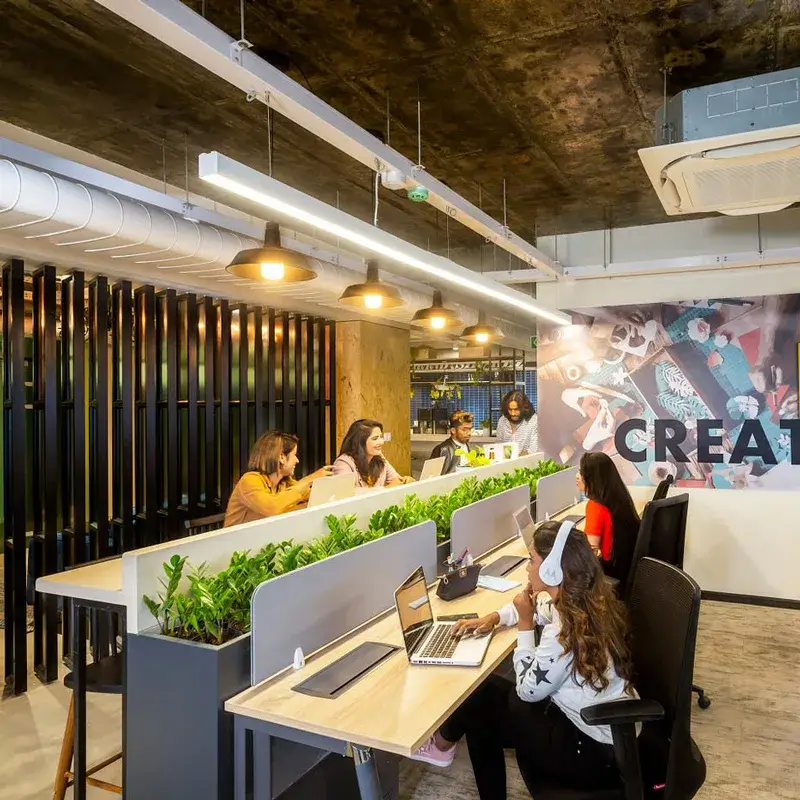
2. Meeting Rooms
Lighting objectives: Create a calm and focused atmosphere for communication, supporting multiple scenarios such as presentations and video conferences.
| Item | Recommended Configuration |
| Installation Method | Suspended + recessed combination lighting to avoid blind spots |
| Recommended Color Temperature | 3000K~4000K, compatible with dimming/color adjustment systems |
| Color Rendering Index | CRI≥90 to ensure accurate reproduction of skin tones and material colors |
| Control Method | Recommended smart scene presets: presentation, video, and discussion modes |
| Special Recommendations | Avoid installing fixtures in projection areas to minimize screen glare and interference |
Lighting fixture selection tips: Tunable White linear lights can be used to achieve seamless color temperature adjustment from 2700K to 6500K.
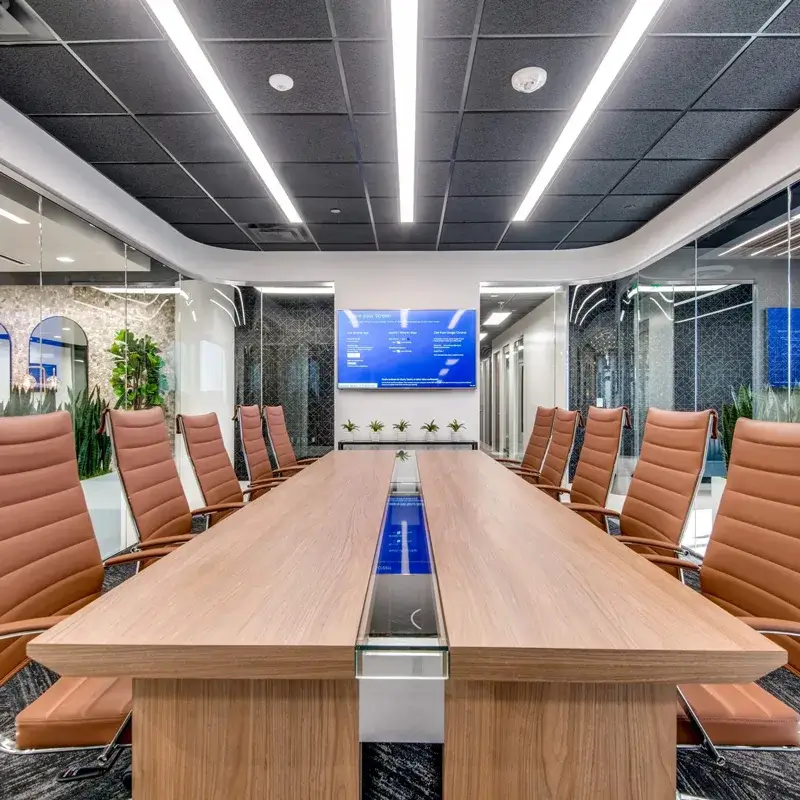
3. Manager/Independent Office
Lighting Objective: Balance functional lighting with spatial ambiance to reflect a simple, high-end office image.
| Item | Recommended Configuration |
| Installation Method | Single lamp suspension or concealed embedding |
| Recommended Color Temperature | 3000K~4000K, creating a warm and welcoming atmosphere |
| Lighting Requirements | Main light + local lighting (table lamp/wall lamp) combination |
| Appearance Design | Optional black frame/brushed metal lamp body, enhancing texture |
Space Recommendations: Combine natural light with lighting to enhance the spatial layering and improve the visitor experience.
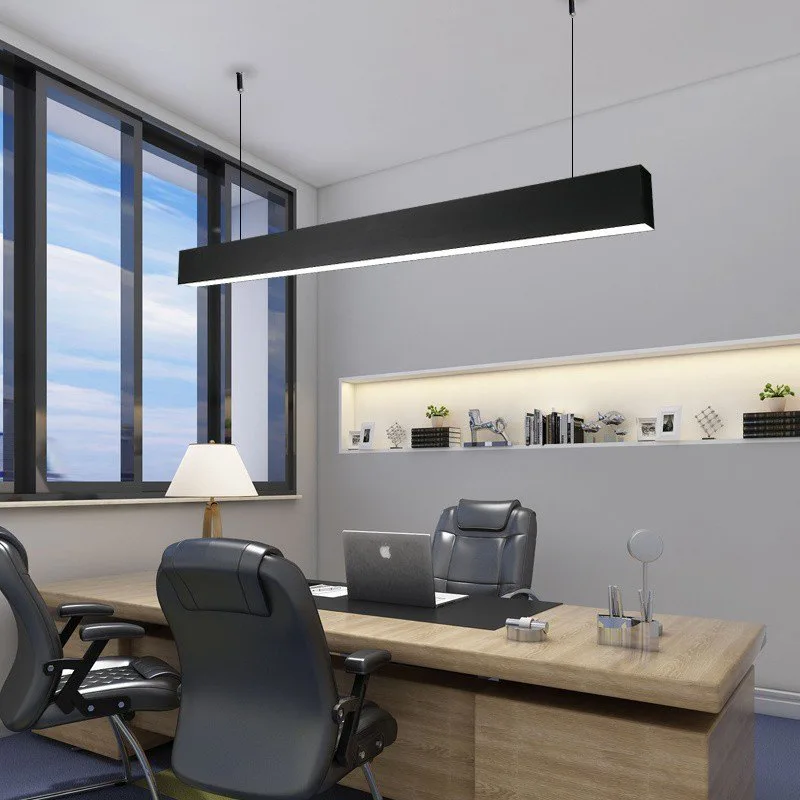
4. Reception Area/Front Desk
Lighting Objectives: Create a first impression, reinforce the brand atmosphere, and serve as both a guide and a visual focal point.
| Item | Recommended Configuration |
| Installation Method | Linear light splicing, suspended/Recessed/wall-mounted installation |
| Recommended Color Temperature | 3000K~3500K, for a warm atmosphere |
| Color Rendering Index | CRI≥90 (suitable for display areas) |
| Control System | Can be equipped with RGBW or Tunable White solutions to display visual changes |
Highlight design: Customized linear lights in circular, zigzag, and logo shapes are used to enhance the visual recognition of the space.
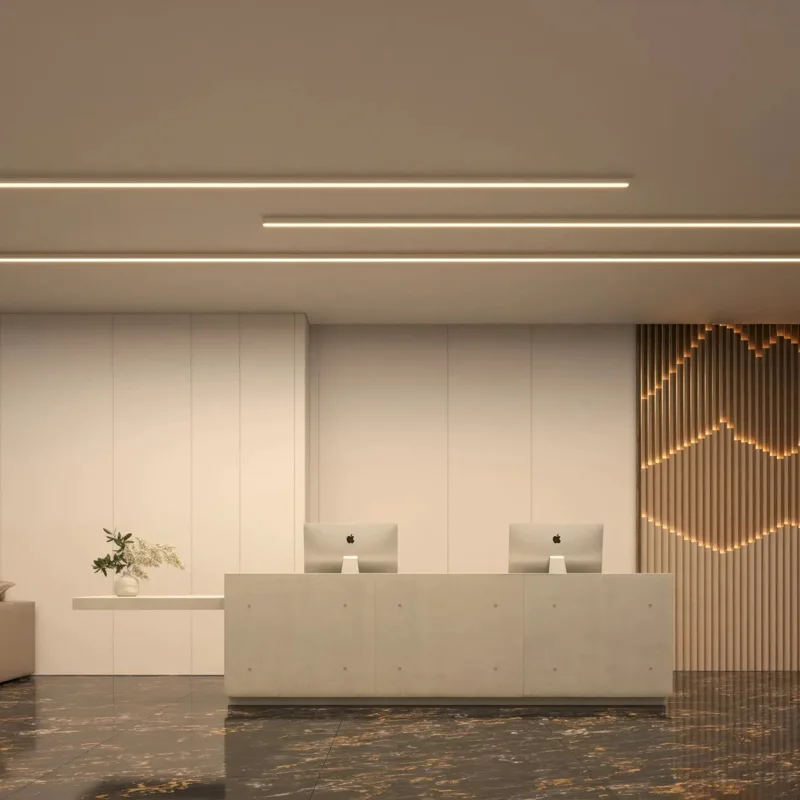
5. Corridors & Shared Areas
Lighting Objectives: Illuminate walking routes, maintain visual safety, and control energy consumption.
| Item | Recommended Configuration |
| Installation Method | Surface-mounted or recessed continuous linear lights |
| Recommended Color Temperature | 4000K, maintaining a bright and clear environment |
| Control Method | Recommended to be paired with motion sensors and timers |
| Light Efficiency Requirements | ≥110lm/W, improving overall energy efficiency |
Energy-saving Recommendations: Using 24V DC low-voltage linear lighting fixtures can reduce power consumption and extend service life, making them suitable for areas with long operating times.
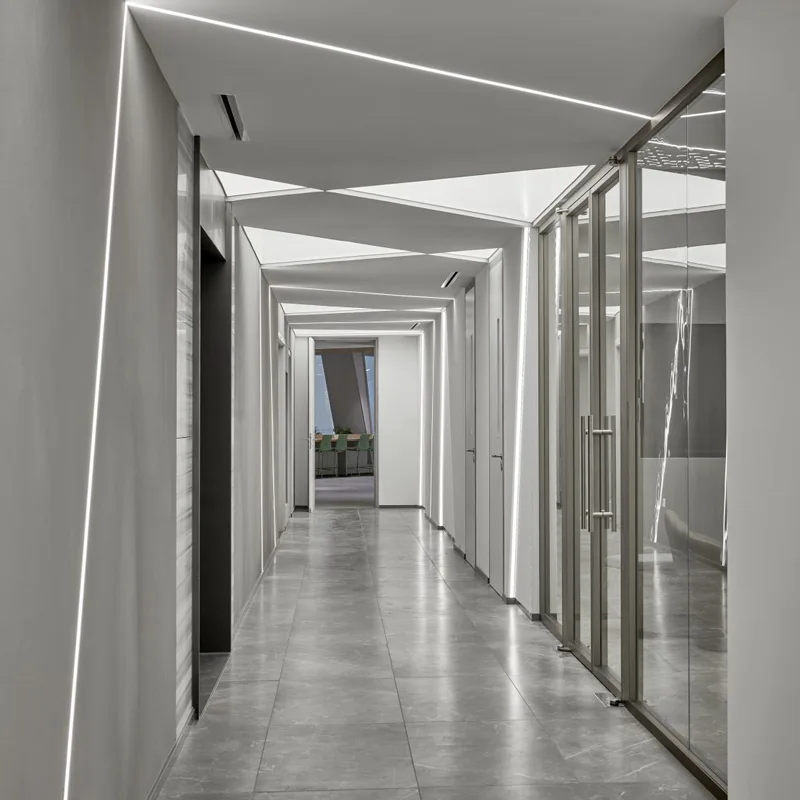
Conclusion
In modern office spaces, lighting is not merely infrastructure; it is an essential component that shapes the ambiance of a space, enhances employee focus, and conveys a company’s brand image. Proper lighting design can effectively reduce glare, alleviate fatigue, and improve focus and comfort.
LED linear lights, with their uniform light output, sleek design, and flexible installation options, have become the mainstream choice for office spaces. However, to achieve optimal results, a systematic and professional configuration is required, taking into account spatial structure, lighting methods, and project requirements—not merely the selection of lighting fixtures.
If you are planning a new office lighting project or facing the renovation and upgrading of an existing space, we invite you to contact the SignliteLED team. As a specialized provider of LED linear lighting solutions, we not only offer high-quality linear light products but also provide customized services.
We believe that lighting is not just a product but a value-driven design. SignliteLED is committed to infusing every project with greater efficiency, comfort, and aesthetic appeal.
